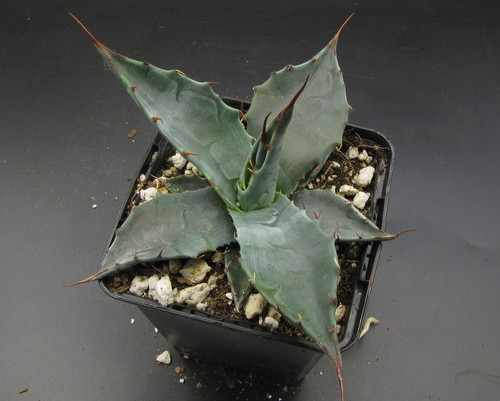Pot Size: 8"
Accepted Scientific Name: Agave lophantha 'Quadricolor'
Origin and Habitat:
Agave lophantha is native to northeastern Mexico, particularly in the states of Tamaulipas and Nuevo León. It thrives in rocky slopes, open scrublands, and desert grasslands where the soil is mineral-rich and well-draining. This agave is adapted to withstand hot, arid climates, extreme sunlight, and limited rainfall, storing water in its fleshy leaves to survive drought. The 'Quadricolor' cultivar has been developed for ornamental value, though it retains the resilience and environmental tolerance of its wild counterparts.
Description:
Agave lophantha 'Quadricolor' forms a compact rosette approximately 8–12 inches across when grown in containers, with potential to grow larger in the ground. The stiff, sword-shaped leaves feature striking variegation of four colors: deep green centers, yellow edges, lighter green streaks, and red margins that intensify in full sun. Each leaf tapers to a sharp terminal spine, adding a dramatic architectural presence. While flowering occurs only once at maturity, the bloom stalk can reach several feet tall, bearing clusters of yellow-green flowers.
Cultivation:
Zone: Hardy in Zones 8–11; must be protected or brought indoors in colder climates.
Temperature: Ideal range is 15–32°C; tolerates occasional drops to -6°C with protection.
Growth rate: Slow to moderate.
Soil: Requires well-draining soil; pumice-based mixes prevent root rot.
Watering: Water deeply but infrequently; allow soil to dry completely between waterings. Minimal water in winter.
Fertilizing: Apply a diluted cactus fertilizer every 2–3 weeks during the growing season.
Light: Requires full sun to partial sun for best coloration and compact growth.
Pests and diseases: Generally resistant, but may be affected by agave snout weevil, scale, or fungal rot if overwatered.
Propagation:
Propagated by removing offsets (“pups”) from the base of the parent rosette and replanting in well-draining soil.







